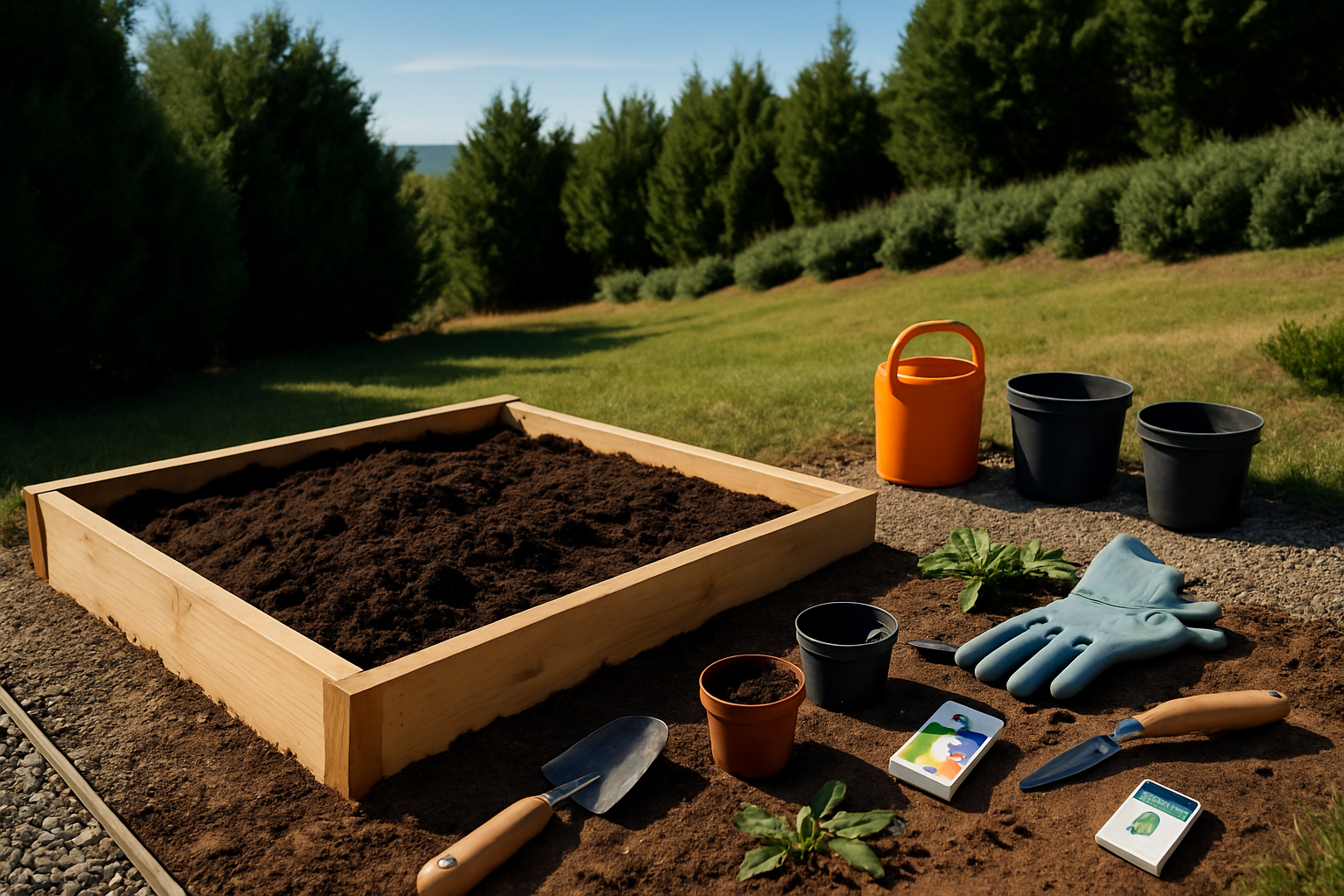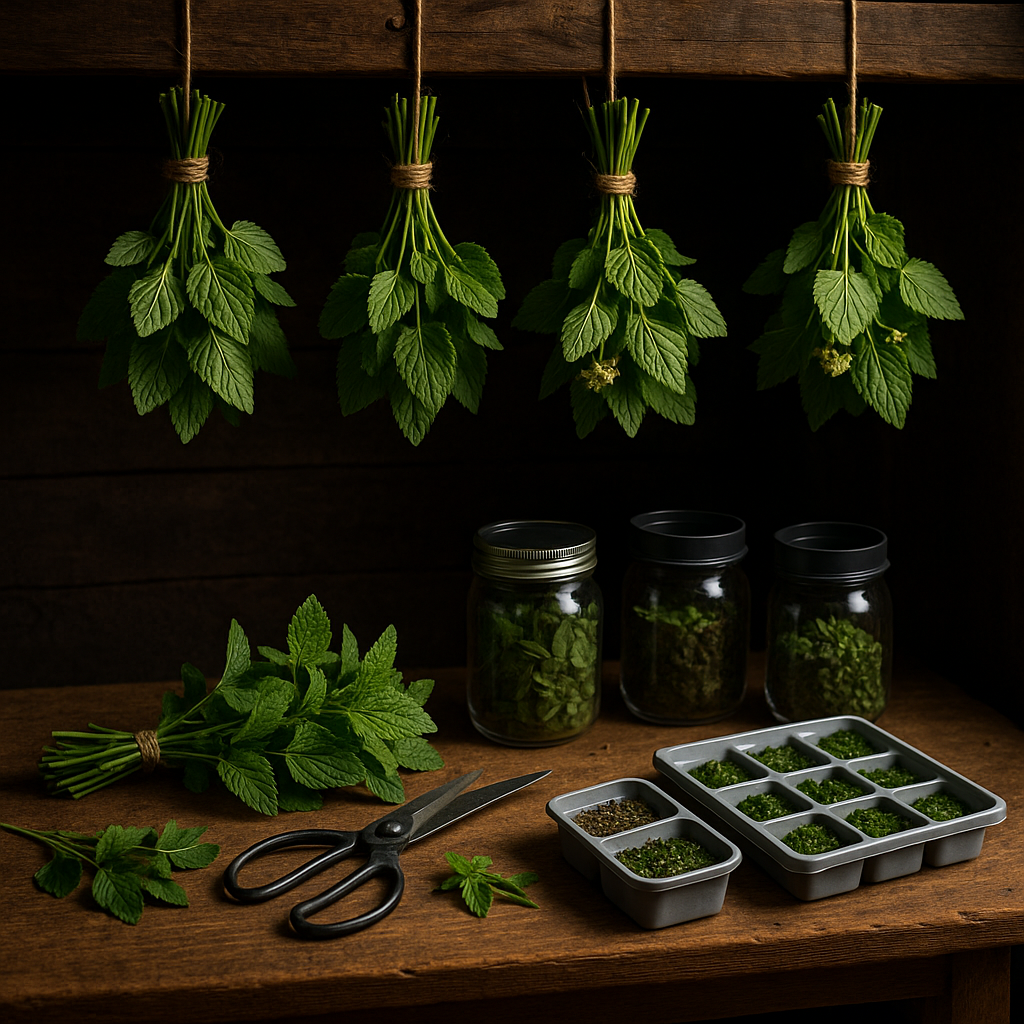Understanding Lemon Balm & Its Cold-Hardy Nature
Lemon balm (Melissa officinalis) is a fragrant, low-maintenance herb from the mint family, cherished for its soft, lemon-scented leaves and small white flowers. Native to the Mediterranean and Western Asia, this perennial herb thrives in temperate climates but has adapted well to many parts of the world.
One of lemon balm’s standout qualities is its cold-hardiness—it survives chilly winters in USDA zones as low as 4, bouncing back when warmer weather returns. In fall, as temperatures drop, the plant naturally enters dormancy: above-ground growth dies back, and the root system stores energy deep underground. Come spring, fresh shoots reliably emerge, often more vigorous each year.
This cycle means you can count on lemon balm to flourish through seasons, making it an ideal addition to both established beds and beginner gardens. For gardeners in frosty regions, consider mulching around the base in late fall to protect roots and encourage healthy regrowth.
Even after harsh winters, lemon balm’s resilience ensures it returns year after year, offering a continuous supply of aromatic leaves for teas, recipes, or pollinator-friendly landscaping. Its ability to self-seed and naturalize also means your herb patch might gently expand over time—just trim flowers if you prefer to keep it in check.
Preparing Soil & Choosing the Right Location

For a thriving garden in cold climates, start by picking soil that drains well and holds nutrients. Heavy clay or waterlogged patches lead to root rot, while sandy soils may dry out too quickly during rare warm spells. Aim for a soil pH between 6.0 and 7.0—you can easily check this with an affordable home test kit from your local garden center.
If your soil is cold, wet, and slow to warm up in spring, it helps to mix in organic matter like compost or aged manure. This boosts drainage and kicks off biological activity as soon as the sun hits.
When choosing a garden site, look for a spot that receives at least six hours of direct sunlight each day. In northern locations, finding a south-facing slope or an area shielded from prevailing winds—using fences, evergreen shrubs, or even sheds—can make a big difference in heat retention and plant health.
For many gardeners dealing with stubbornly chilly ground, raised beds and containers are game changers: these warm up faster than in-ground plots, allow you to create your own perfect soil mix, and drain excess water efficiently. Consider using dark-colored containers or painting your bed frames a deep shade to absorb more sunlight on cool days.
By focusing on soil quality and smart placement, you give your garden its best shot at success, even when the weather seems stacked against you.
Planting & Sowing Lemon Balm in Cool Regions
In cooler regions, timing is everything when planting lemon balm. Start seeds indoors about 6-8 weeks before your last expected frost. Use seed trays filled with moist, well-draining potting mix, and cover the seeds lightly, as they need light to germinate.
Place the trays on a sunny windowsill or under grow lights, keeping them at a steady 65-70°F (18-21°C) for the best results. Once seedlings have two sets of true leaves and outdoor temperatures consistently stay above 50°F (10°C)—typically mid to late spring in northern climates like the Upper Midwest or New England—they’re ready to be moved outdoors.
Before transplanting, harden them off by gradually introducing them to direct sunlight and outdoor conditions over 7-10 days. Sow seeds or plant seedlings in a sunny, sheltered spot with rich, moist soil; spacing plants about 12-18 inches apart will help them thrive.
Here are some practical tips for success:
- Use floating row covers early in the season for extra frost protection.
- Try sowing a small batch directly outside after the last frost as a backup.
- For regions like the Pacific Northwest or Canadian prairies, aim for mid-May to early June planting.
- In slightly milder areas, late April could be the perfect planting time.
With this strategic approach, your lemon balm will get a strong, healthy start—even in cool climates.
Protecting Lemon Balm from Frost & Winter Damage
Protecting lemon balm from frost and winter damage is essential to ensure your plant returns strong in spring. As the colder months approach, start by applying a thick layer of mulch—such as shredded leaves, straw, or pine needles—around the base of your lemon balm. This insulates the roots and helps regulate soil temperatures, preventing harmful freeze-thaw cycles.
If a sudden frost is predicted, cover your plants overnight with lightweight plant covers, old bedsheets, or specialized frost cloths. Secure the edges with rocks or bricks to keep cold air from sneaking in.
For potted lemon balm, insulation is especially important since container soil freezes faster. Wrap pots in bubble wrap or burlap, or group them close together against a sheltered wall to provide extra warmth.
Adjust your watering routine in late fall and throughout winter. Lemon balm dislikes soggy soil in cold conditions, which can lead to root rot. Water sparingly—only when the top inch of soil is dry—and ensure containers have drainage holes to let excess water escape.
If you grow lemon balm in pots, bring them indoors to a sunny, cool room or an unheated garage before the first hard frost. Supplemental light from a grow lamp can help if natural light is limited. Outdoor plants can be overwintered by allowing them to go dormant under mulch, then emerging once warm weather arrives.
With these simple steps, you’ll give your lemon balm the best chance of surviving winter and thriving the following season.
Ongoing Care & Spring Recovery
As the growing season kicks in, keeping up with routine care is key for thriving plants. Start by watering consistently, aiming for deep soaks rather than frequent, shallow sprinkles—this encourages strong root growth and protects against drought. Feeding your plants is just as important; a balanced, slow-release fertilizer works wonders in early spring, supporting lush new growth.
Weed control is a must, too—pull weeds early before they compete for moisture and nutrients, and top soil with mulch to suppress new invaders. After winter, check your plants for signs of damage such as discolored leaves, dead stems, or mushy crowns. These are often the first clues that cold or frost has taken a toll.
Trim away any dead or damaged material with sterilized pruners to prevent disease and allow fresh shoots to emerge. Dividing overcrowded perennials can also help—they recover faster if you dig them up in early spring, separate healthy clumps, and replant with plenty of space for air and sunlight. For example, daylilies or hostas bounce back quickly when divided before new shoots get too tall.
With attentive care—watering, feeding, weeding, and timely pruning and dividing—you’ll prompt robust new growth and set the stage for a vibrant, healthy garden all season long.
Harvesting, Storing & Using Lemon Balm in Cold Regions

To get the most flavor and medicinal benefits from your lemon balm, harvest the leaves in the late morning after the dew has dried but before the sun gets too strong—this is when the essential oils are at their peak. Use clean, sharp scissors or garden shears to clip stems just above a leaf pair, which encourages bushier regrowth.
Harvest just before or when the plant starts to flower for optimal potency, as the leaves can become bitter after blooming. Once you’ve gathered your bounty, preserving it for the long winter is easy.
Drying Lemon Balm
Tie small bundles of stems together and hang them upside down in a warm, dark, and well-ventilated space—think closets or attics. When the leaves are crisp, strip them from the stems and store them in airtight jars away from light.
Freezing Lemon Balm
If you prefer freezing, chop the leaves and pack them into ice cube trays, cover with water, and freeze. Pop a cube into soups or teas for a quick burst of lemony freshness.
Using Lemon Balm in Winter
Lemon balm’s versatility shines in winter kitchens and home apothecaries:
- Steep dried leaves for a calming evening tea.
- Add to roasted root vegetables for a citrusy note.
- Blend into butters for spreading on hot bread.
For herbal home remedies, use lemon balm tea to soothe cold-weather stress or relieve mild headaches, or infuse it in honey as a soothing sore-throat syrup. With these simple practices, you’ll enjoy the taste and wellness benefits of lemon balm even when your garden sleeps under snow.
